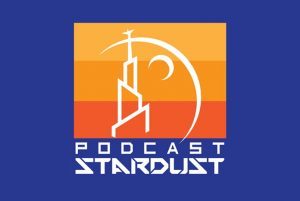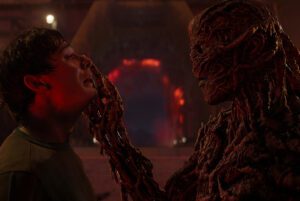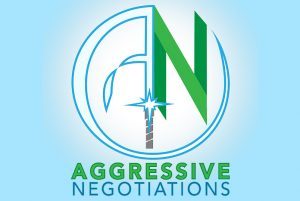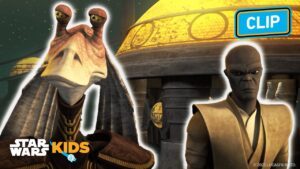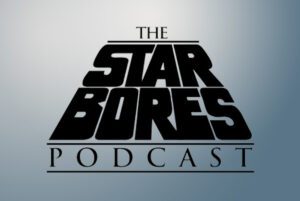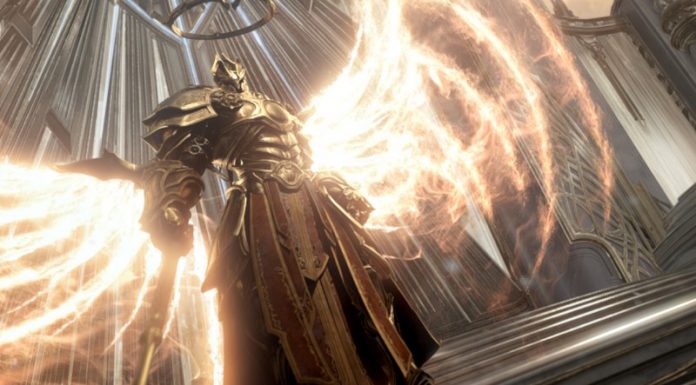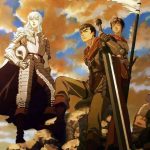The skateboarding industry, much like the video game industry, is a massive web of marketing, of community, and of money – all with a deep well of young men and women’s aspirations fueling it along. They’re both massively popular industries now – the International Olympics Committee has finally acknowledged skateboarding’s cultural relevance – but it’s funny to think that, less than a decade apart, both experienced massive turmoil. The great video game crash of 1983, and the early ’90s crackdown on street skating threatened their lifeblood.
But together, both worlds came together to make something incredible. It helped turn Tony Hawk, a once-down-on-his-luck pro skater, into a living legend and it turned Neversoft, a humble game studio full of rowdy, young developers, into a household name among gamers. 20 years ago this August, Tony Hawk’s Pro Skater
established a legacy that lives on to this day.
“My Life Seemed like it Had Some Potential Again”
Through competitive skating, Hawk himself had become a sort of teenaged wunderkind in the late ’80s. By the time he was 17 years old, Hawk’s annual salary surpassed that of his high school teachers, and he purchased his own condo before graduating. $20,000 royalty checks weren’t unheard of for Hawk by 1987, and the competition championships were plentiful, spurring more and more sponsorship deals.
“[Skateboarding] wasn’t something that I thought I could make a career out of, initially,” Hawk says.
But, in the early ’90s, things came to a screeching halt.

By the time Hawk was 22 years old, his salary was being cut in half every year, the competition was drying up, and those fewer events saw their prize pools shrink. He had committed to two mortgages and had just started a family. For two years, Hawk pulled back on all financial burdens, eating ramen and peanut butter jelly sandwiches, refinancing his house and selling it at a loss.
“
The industry as a whole just struggled to maintain a certain level of interest. Vert skating, the format Hawk had made his name with, was mocked as basic or outright dead. With official skate parks still being difficult to come by for most, skateboarders flocked to public plazas and parks, spurring city officials and law enforcement to crack down on those they regarded as vandals. As veteran skateboarder Steve Rodriguez told HuffPost, the early ’90s were “when every security guy in Midtown New York had a pitbull and mace.” On a structural level, city planners also began to build public areas with anti-skating measures, which coincidentally enough doubled as anti-homeless measures.
“The early nineties were really hard to make a living in skating”, Hawk says, “but I kept doing it, even though it was minimal pay, just because I still loved doing it.”
To make ends meet, he took every opportunity he could. He’d consult on commercials, but none ever seemed to want to feature him actually skating. In time, Hawk’s company – originally known as Birdhouse Projects – gathered dedicated and high profile skaters to sell enough merch and gain enough notoriety for various sponsor deals. The X-Games had debuted in 1995, turning the public eye to extreme sports with more backing than arguably ever before.
In 1996, for the first time in a long time, Hawk was feeling like things were actually going to turn out okay.
“My life seemed like it had some potential again, in terms of my career,” Hawk says.

Even still, as the skateboarding community began to grow again, there were very few video games centered on the sport in the market, much less ones that could compete in the big-budget console market. Between 1997 and 1998, an independent PC coder approached Hawk with a rudimentary engine for a skateboarding game. He was excited by the prospect and decided to shop it around but the pair were met with stark refusals from company decision-makers. Skating simply wasn’t big enough to warrant the budget investment, they were told. A considerably younger Take-Two Interactive presented Hawk with a more fleshed-out skateboarding game demo, but he felt it was too inaccessible for non-skaters. All the while, Hawk was “still just getting by.”
Enter Activision, and the “frat house” boys at Neversoft.
The Crazy Old Days
Neversoft co-founder and president Joel Jewett wants you to know that game development back in the ’90s was a completely different world. When you ask a former Neversoft employee what day-to-day life in the studio was like, including the former president, you almost always get an amused, slightly exasperated sigh, and then a few comments about the “crazy old days.”
The studio’s legacy has long been infamous, but it took more than a frat house to build Tony Hawk’s Pro Skater. The way Joel Jewett tells it, half of the industry practices we take for granted these days were formed in or around Neversoft and the turn of the century.
“You would do your work, and then you would eject a little floppy disk and go over to the other room and merge your work with one of the other team member’s work on their PC, so there was no network,” Jewett says. “There was barely a fledgling internet out there that we’d heard about.”

Jewett, now retired, mentions a recent Neversoft reunion party. Even five years after the studio finally shut down by burning their infamous pierced eyeball logo, there’s still a deep sense of family and camaraderie running through its former workers. Jewett’s stewardship, along with the freewheeling but intense culture of the studio, most certainly saw to that.
Neversoft was born out of the ashes of Malibu Interactive, formerly Acme Interactive. By the time Malibu Comics had acquired Acme, things were “disintegrating,” and multiple employees were beginning to form their own individual studios. Jewett saw an opportunity and asked Malibu level artist Chris Ward and Malibu programmer Mick West to help him start a new company.
The pair agreed, and Neversoft was formally born. Jewett kicked things off by buying a single, old Compaq PC for West, who would initially serve as the company’s programmer. On top of it all, Jewett’s first child was born within a month of the company’s founding. In hindsight, he says that at least it helps him keep track of how long he’s been doing this kind of work.

Neversoft’s first real contract ended up being for Playmates. No, not those ones. The ones that made Teenage Mutant Ninja Turtle toys, which are still fun, but you get the idea. As a budding studio, Neversoft was just happy to have the work, and were soon working on a Sega Genesis adaptation of the Skeleton Warriors franchise.
Things grew difficult for the team, which was gradually expanding in size as the next couple years went on. While Skeleton Warriors shipped and Neversoft found work developing a Ghost Rider game, it was canceled. The crew then turned to their own new IP, “Big Guns,” which then became a victim of continual requests for revisions from Sony Computer Interactive Entertainment. A port for the first-person shooter MDK took longer than expected.
“We weren’t very well-organized and we had a bunch of talented people,” West says. “We were all kind of bouncing around and didn’t have a strong schedule.”
Again and again, Neversoft found itself up against a wall, and eventually had to reduce its staff.
“You’ve been in the games industry for a while you get used to things like that though, and you just pick up and move on and you see what’s the next project and let’s do that,” West adds.
“
But things turned around in 1997. Months of shopping around its technology and services eventually turned into an offer from Activision. The publisher’s work on the Bruce Willis action adventure “Apocalypse” wasn’t panning out, and Neversoft looked like a studio ripe for bringing it to fruition.
“We nearly failed as a company just before Apocalypse,” West admits. “We nearly had to let everybody go because we were running out of money. We were going paycheck to paycheck in the company and we’d get monthly payments from the publisher. When we found Apocalypse and got that going, we recognized Activision was good at giving us money, and so, yeah, it was something that kept the stability within Neversoft for the foreseeable future.”

Even if Neversoft effectively had to rebuild all of Apocalypse, at least it meant the team were getting work. At the same time, skateboarding was back on the rise thanks to young upstarts like Hawk and Birdhouse. Activision saw an opportunity and gave Neversoft the chance to bring to life a new skateboarding game. Even better, it would largely have the freedom to make the game according to its own vision.
“Back in those days, it was really hard to keep a company going and make a name for yourself, because to be frank, the publishers very often got in the way,” Jewett says. “The decision making progress process on the publishing side could kill the development, because they would change their mind all the time.”
As the story goes, Neversoft repurposed Activision’s assets from Apocalypse for the new skateboarding game, including the 3D model of Bruce Willis, and built a downhill course for the model to skate down. This was to be its first demo to show if it really had what it took.
Scott Pease, who at the time was working for Activision but acting as a sort of liaison to the Neversoft team, was incredibly excited for such an opportunity. Pease was an avid skater throughout his youth and was almost definitely one of the first people between Activision and Neversoft to see this new game’s potential, having played earlier skateboarding games like 720 and the California Games series.
Both Neversoft and Activision worked together to scout the skateboarding world for the face of their game, and it didn’t take long to figure out who that would be. Activision set a meeting up. Tony Hawk was coming into the publisher’s offices for a demo. Pease and others at Activision had heard a rumor that Hawk was being pitched by Take-Two Interactive, so they had to be first.
“So Tony rolls in, wearing like a t-shirt and cargo pants and it’s like a boardroom full of suits,” Pease says. “And they start hitting him with the powerpoint. You know like ‘skateboarding is on the rise and da, da, da, video games.’ I was watching [Hawk] the whole time and I could just see him kind of sinking lower into his seat. Just like all these boring slides over and over and over again. And then at the very end of the meeting, we get to roll in on a TV cart a TV with a PlayStation hooked up to it running Neversoft’s demo.”
Sensing his opportunity, Pease put a controller in Hawk’s hands and said, “Hey, give this a shot. This is what we’re working on.”
“
Within moments, both Hawk and Pease knew they had something special.
The engine literally had Bruce Willis as the character, on a skateboard, the gun strapped to his back, doing kickflips through the desert, Hawk says. “But I knew something was there. I felt that it was intuitive. I felt that the gameplay was there, and it was fun to play, even if you didn’t know how to skate. That was the key for me.”
By this point in development, Pease had written up an entire list of tricks Neversoft wanted to put into the game and showed it to Hawk. Pease’s list of tricks seemed to excite Hawk.
“So, it was basically that day that I decided,” Hawk says. “I’m going this direction. I would much rather go this direction than what Take-Two has to offer because this seems like it’s much more appealing to a better, bigger audience, and more fun in the sense that you can do impossible tricks.”
And so Tony Hawk’s Pro Skater was born. The size of the payment Activision was offering “wasn’t huge,” as Hawk puts it, but it was one of the best deals he had been able to make since he crawled out of financial strife. So what if he had to teach most of the Neversoft guys about skateboarding?

Work Hard, Play Harder
For Jewett, making something like Tony Hawk’s Pro Skater was never once considered an obligation imposed upon Neversoft.
“Even when we started making it, we considered it to be the opportunity of a lifetime, because it’s basically making original content on a certain level, you know?” Jewett says.
According to Jewett, one of the primary reasons Tony Hawk’s Pro Skater managed to succeed as quickly as it did was because every employee was encouraged to embed themselves in skating culture. Jewett himself had been riding skateboards since the early days of longboards in the ’70s, and Pease had grown up on it a number of years later. As for the rest of Neversoft? “Do you skate?” was a question quickly added to the hiring process.
Things didn’t stop there. Jewett threw $3,000 of Neversoft’s budget (still a huge investment for the modest studio) towards building a skateboarding ramp outside the studio. Company outings were regular trips to Skate Street in Ventura, or just at Jewett’s own house.
“As we interviewed people, they would have to be awesome at their job to get hired, if they couldn’t skate,” Jewett says. “And we really tried to get them to be awesome at their job and skate.”
The wild party mindset of Neversoft extended to antics that the games industry might look upon questioningly these days. West remembers betting a coworker a few hundred dollars that he could learn to kickflip before him.
“It was your life when you were a young, male, computer programmer back in the day,” West says. “You’d work long hours and you’d hang around in the office afterwards and do stupid stuff, like you’d build forts out of boxes and throw things at each other.”

Then there were the strip club visits. In Neversoft’s earlier days, before employees were beginning to become parents, these weren’t that uncommon, West says.
But through all the activities that might seem archaic now, Neversoft was also pioneering new practices. When you speak with Jewett about the heyday of Neversoft, he’s just as eager to talk about how he implemented a free lunch delivery program as he is to discuss skateboarding. There were also efforts to get team members to scout out real skateparks that could serve as inspiration for level designers. Field trips to real-world locations are old hat by now in the industry, and even Jewett knows he didn’t invent any particular tricks, but it did perhaps help Neversoft nail the aesthetic and spirit of the urban environments they were trying to recreate.
“I’m not going to say I’m the one that invented all of this shit,” Jewett says, “but anytime that we did a level, like after the first or second game, we started making sure that we had reference material directly from the skate sites that were in the video game.”
One thing Jewett absolutely claims to have invented was a weekly – as opposed to monthly, which was the industry norm – testing process, with developers taking the game home on weekends to study what needed fixing.
“What would happen [at a typical studio] is, you’d try to burn your game in a month and you’d have so many bugs in it that the thing sometimes wouldn’t even compile or frickin’ work,” Jewett says. “And then you’d spend a whole week getting your game fixed to even work.”
The studio made it a pride contest among employees. Break the game with your messy code? Put a dollar in a jar as penance.
“I don’t know if you can do that in the workplace anymore,” Jewett says. “I don’t know if ridiculing your employees for doing something stupid is allowed anymore, but it works great. It works great if everybody is totally on board. So everybody was on board, and we called the jar of shame the “Jar Jar,” named after Jar Jar Binks of course.”
Talking to Neversoft employees, phrases “work hard, play hard” are bandied about, but it’s the “work hard” that turned them into the annual release machine they became.
“We went from that frat house mentality to like kind of a crazy buttoned-up developer,” Pease says. “I would put our sort of ability to ship games, lock in on features and get things done, put it up against anyone.”
The company didn’t completely embrace crunch culture. The official policy was that if you worked at Neversoft, you were going to work your ass right up until it was time to go home, and then live your life free of work concerns.
“We would work as many hours as we needed five days a week, and then try to shut down and send people home for both days on the weekend,” Jewett says. “And that way they could know that they could see their families and everything. But people would still sometimes just come in, like, ‘I got this super cool thing and I’m working on it, and I love this game, I love this team, and I want to do my part to make the thing better.’ So, that was good.”
Skating By
While making Pro Skater was an exciting prospect for the team, some will freely admit they had no real idea of what they were getting into. The prospect of designing a physics system, a trick system, and balancing it all between accessible fun and the competitive side to the sport proved daunting.
Like all great conceptualization processes, it started with cramming everybody into a room with a whiteboard and some markers.
“I stood up there and I just drew a picture of a school building and some steps and some half-pipes, just very very simple,” West says. “And I said ‘What should the game be? What do we do in the game? What is fun to do?’ It was in those two days that we did this, the entire company just standing in front of or sitting in front of the whiteboard in the conference table, getting ideas like the S-K-A-T-E letters.”
Of course, even if many of the folks at Neversoft were solid skaters, they still weren’t on the level of growing legends like Hawk, Burnquist, or Chad Muska. The only way to really get a feel for how to program and animate a kickflip was to learn from the pros.

“In the first game we pretty much ate up all the basic skateboarding tricks,” Pease says. “Even just to flesh out the eight directions on square and circle. And we were learning as we went too. And not only just Tony but all the skaters, the pro skaters. I mean the guys would come in and visit Neversoft and hang out with us. And that was like my go-to skateboarding school moment. You know just even just hearing those guys talk about that stuff in that detail, I think impacted everybody on the team. Like you just you get a real respect for what they do and like how hard it is.”
And then Tony Hawk threw a spanner in the works: during the 1999 X-Games, he performed the very first 900. Tony Hawk’s Pro Skater was due to launch only about two months later.
“I think we were getting ready to submit the game to Sony at that point,” says Pease, who at this point had been a studio development director and producer on Pro Skater for some time. “It was like done-done. And we’re like, crap, we’ve got to get the 900 into the game. So it was just like crunch, crunch, crunch. Like grab all the video, animate, animate, animate. Try to get that 900 in. Right, down, circle I think, or whatever. And yeah, we got that thing into the game at the last second because we had to. There was no choice. It had to be in there.”
“
As things began to wrap up on Pro Skater in the summer of ’99, nobody had any idea if it would be a success. Both the Neversoft crew and Hawk were content with having just made it.
“It was very exciting because there was no rule book that we had to follow to do this,” Hawk says. “We were just creating what I thought would be a fun way to translate skating into a video game. And they were totally on board, and they were totally receptive to all my feedback, and it was really fun. And even up to the end, before we knew that we had any sign of success, I was just proud of the project.
“I’m sure that Activision hoped it would be [a huge financial success], but we were just hoping, I was just hoping to sell the game to skaters that were inspired by it and maybe it motivated them to actually go buy a PlayStation.”
Hawk ended up using some of his friends in the skating world as a gauge of how the game might fare, burning full copies of the game and sharing them around.
“Video gaming wasn’t… it’s not what it is now,” Hawk says. “My friends were so excited about it that I knew we had a hit among the skate community. That was pretty much my litmus test, where I was like, ‘All right, the skaters are going to like this game. That’s all I really care about.’”
As luck would have it, the general populace would get the chance to play the game before buying it, too. Pro Skater ended up featured on one of the coveted PlayStation Jampack demo discs. Suddenly, friends from the Malibu Interactive days were calling the Neversoft crew up.
“We’re like, ‘Hey that’s cool, that’s fucking up development on other games. That’s cool! They like it? They actually like it?’” Jewett says. As the public started to get their hands on it, Jewett says the team ultimately had to adjust the maximum high score allowable by an entire digit because players were already surpassing expectations.

By this point, things had turned around mightily for Hawk and his career, with regular endorsements and competition earnings flowing in. Activision tried to put a cherry on top by offering Hawk a buyout of all future royalties.
“When they offered me the buyout, I declined it mostly because I was in a pretty comfortable position and I felt like, ‘I believe in this as much as they do. I want to see how well it does and I want to see it through, long into the future, if we can,’” Hawk says.
That future included becoming one of Activision’s highest-selling franchises, and thus the floodgates were opened for Neversoft to refine the series into its greatest possible form, all while acquiring big IPs like Spider-Man. Neversoft was going to get its wish. It was going to get to make another Tony Hawk game and keep the lights on.
The new question was, how was the team going to build upon it, and how fast would they be able to do it?
Jewett was full speed ahead. “Which would you rather do?” he asks. “Sell four million a year? Or fuckin’, sell two million a year? So given that very simple math, I was just like, we gotta do one every year, guys. And of course you always hear the, ‘Oh, we’re burning out the franchise.’ But it’s just, to me it’s kind of like, you should live every day the same way, man. Live like you ain’t going to be here tomorrow because you might not be.”
Part of the desire to get a second game out fast was born from the competition that was sure to bubble up if Neversoft didn’t command the board quickly enough. This is where Tony Hawk’s annualization began, for better or worse.
“In the beginning, we looked at it as a positive, right?” Pease says. “Every time we shipped a game there were things left undone that we felt like we wanted to do in the next game. It wasn’t like a bad word back in the early days. And then as people grew tired of it, then it became this negative thing, but for us, it was like this like kind of insane challenge.”
Neversoft had the institutional knowledge, the engine, and even a “custom Neversoft language” that determined how its trick system and physics worked. Cracking into that realm without an immense investment would surely be far more trouble than it was worth for other publishers and studios.
“We just put up this wall that said ‘good luck trying to catch up to us,’” Pease says.

The Impact
20 years later, the Neversoft family and Hawk are eager to reflect. Maybe it’s because of the franchise’s huge success, right up until Neversoft’s departure to work on Guitar Hero III: Legends of Rock in 2007. Maybe it’s because the effects of the series can be felt not only in the video game industry but in the sport of skateboarding.
For Tony Hawk, he sees it in the kids learning to skate who have never even heard of him before.
“Some of the top pros literally have told me, ‘I started skating when I played the game because I wanted to learn these tricks.’ But, as we’re coming into… now, we’re 20 years on, there’s a whole new crop of kids that are skating, that only know me because their parents knew who I was,” Hawk says. “Or they know me because they see me on some kids show. A lot of the reason that I’m still invited to do those kids shows is because of the video games. So, there’s just so many levels to it. And I attribute my ongoing success to, beyond just still skating at my age and still being out there working as much as ever, I attribute just the name recognition alone to that video game series.”
Ever the consummate businessman, Hawk is mindful of just how many doors were opened to him as a result of the huge boost in name recognition he received.
“To me, it’s all unreal,” Hawk says. “I still am shocked how far skating’s reach has come. I get invited to do speaking gigs now. That’s not something I’d ever imagined doing, going to do motivational speeches or a speech, telling my story to a group of people because it just didn’t seem that interesting. No one was interested in it when I was a kid. And the idea that I can get in front of a group of people that are genuinely engaged and talk about kickflips, and they know what I’m talking about, is absurd to me. And a lot of them know what a kickflip is because of THPS.”
“
As we speak over the phone, Hawk is preparing for a video shoot at one of his company’s buildings in the San Diego area, but he’s also got an eye on the 2020 Summer Olympics, where skateboarders will compete for the first time. Hawk is hoping that the long-awaited inclusion of skateboarding may give some of today’s rising stars a chance at developing a bigger following, but he also knows it’s the day-to-day grind that will truly launch a new star.
“[The Olympics] need our cool factor more than we need their validation,” Hawk says.
The success of Pro Skater has also afforded Hawk the chance to just sit back and work on himself, and on getting skateboarding culture into new regions, domestic and foreign. The Tony Hawk Foundation has funded the creation of hundreds of skateparks throughout the United States, but also around the world; Hawk keeps a photo of a small Ethiopian child learning to ollie in his office.
“I feel like skating is the great equalizer,” Hawk says. “People don’t care what your background is, what your race is, where you come from. They just care if you’re a good skater.”
As for Neversoft, some of its members have elected to enjoy their retirement, or have found other areas of work. What they haven’t lost is that identity as a crew that was boisterous, rowdy, and maybe just a little bit weird. West, who left Neversoft after Tony Hawk’s Underground, has found a hobbyist’s success as a writer and authority on debunking conspiracies. He’s authored a book on the subject, be it chemtrails, 9/11 controlled destruction theories, or false flag operations.
“[Neversoft] was a lot of fun back then, and I look back on it with great fondness,” West says. “It was a defining time in my life, and I think for a lot of other people.”
Pease, drawing from his background as Neversoft’s studio director, took up investing, indie game development, and inventing toys that have been featured at the Maker Faire.
“The beauty of Pro Skater was really its timing,” Pease says. “All these sort of magical things came together at the right time at the right place and worked off of each other. I don’t think at the time we really even understood the extent that the game was impacting the real world.”
“I think Joel used to say we always wanted to feel like a sports team,” Pease continues. “As a developer, you had your coaches and then you had your starting players, but everybody had to work together to make the thing great. And that’s kind of what I remember most about Neversoft.”
As for Jewett, always the man looking for a good time, he’s enjoying his retirement between his two homes in California and a third in Montana.
“It’s a funny thing because you don’t ever in your life think that you’re going to wind up having an experience like that,” Jewett says. “And in a way it happened so fast, even though it was like nine years or whatever. It was the fastest nine-year experience you can imagine. That’s how it was because it was super non-stop and everything was pretty much frickin’ high on life the whole time. It was pretty epic.”
If ever there was a doubt that the studio behind Tony Hawk’s Pro Skater was epic, one need only look at the video of the eyeball logo’s infamous Viking funeral. It wasn’t simply enough to shoot it with a flaming arrow. Jewett had to douse it in gasoline, too.


Joseph Knoop is a writer/producer for IGN.
